#Franco Fraticelli
Explore tagged Tumblr posts
Text

Machine Gun McCain (Gli intoccabili), Giuliano Montaldo (1969)
#Giuliano Montaldo#Mino Roli#John Cassavetes#Britt Ekland#Peter Falk#Gabriele Ferzetti#Pierluigi Aprà#Luigi Pistilli#Florinda Bolkan#Tony Kendall#Salvo Randone#Gena Rowlands#Erico Menczer#Ennio Morricone#Franco Fraticelli#1969
9 notes
·
View notes
Text
La setta
Benvenuti o bentornati sul nostro blog. Nello scorso articolo, come di consueto, siamo tornati a parlare di animazione e questa volta l’abbiamo fatto prendendo in esame la Pixar, con uno dei suoi seguiti migliori, il loro undicesimo lungometraggio animato, Toy Story 3 – La grande fuga. Andy ormai è cresciuto, ha 17 anni e tra non molto partirà per il college e da tanto tempo non gioca più con…
#ADC#Andrea Tinnirello#Angelika Maria Boeck#Carla Cassola#Cecchi Gori Group#Dario Argento#film#Franco Fraticelli#Francoforte#Giovanni Lombardo Radice#Giovanni Romoli#Herbert Lom#horror#Kelly Curtis#La setta#La setta film#Mariangela Giordano#Mario Cecchi Gori#Massimo Antonello Geleng#Massimo Cristofanelli#Michel Hans Adatte#Michele Soavi#Miriam Kreisl#Moebius Kelly#movies#PentaFilm#Pino Donaggio#Raffaele Mertes#Recensione#Recensione film
0 notes
Text

Giancarlo Giannini in Seven Beauties (Lina Wertmüller, 1975)
Cast: Giancarlo Giannini, Fernando Rey, Shirley Stoler, Elena Fiore, Piero Di Iorio, Enzo Vitale, Roberto Herlitzka, Lucio Amelio, Ermelinda De Felice, Biaca D'Origlia, Francesca Marciano. Screenplay: Lina Wertmüller. Cinematography: Tonino Delli Colli. Production design: Enrico Job. Film editing: Franco Fraticelli. Music: Enzo Jannacci.
As a student of literature, I was called on to memorize the seven deadly sins: pride, envy, wrath, avarice, sloth, gluttony, and lechery. But I don't think I was ever made to recall the corresponding virtues, which the medieval church categorized as humility, kindness, patience, charity, diligence, temperance, and chastity. Our age has added another to the list of virtues: survival. We speak of "survival of the fittest," which has caused us to couple fitness with health as the supreme necessities for survival. One of our most popular TV shows, now in its 45th season, is Survivor, the reality competition show that has a motto: "Outwit. Outplay. Outlast." Which brings us to Pasqualino Frafuso, aka "Settebellezze" or "Seven Beauties," the protagonist of Lina Wertmüller's scarifying satire Seven Beauties. Pasqualino commits almost every one of the seven deadly sins all for the sake of survival. He outwits, outplays, and outlasts the worst that can befall him in Europe under the heel of the Nazis, lying, killing, raping, seducing as the means to an end: staying alive. And of course we loathe him for it, while at the same time questioning what we would do in the same circumstances. Giancarlo Giannini's performance as Pasqualino would be a standout in any film: He's introduced to us as a Chaplinesque caricature of a strutting dandy, and for a while it's fun to watch him go from bad to worse, as in his efforts to dispose of the body of a man he has killed. But soon a queasiness sets in, as we wonder how much lower this worm can crawl. There should be no redemption for a Pasqualino, but instead Wertmüller gives us a cynical ending, suggesting that Pasqualino will repopulate the Earth with his own kind, in his own words, "A rotten comedy, a lousy farce, called living." Seven Beauties is an unsubtle film, and its lack of finesse in character and situation works against its ostensible aim as a moral fable. It makes a feint at seriousness of purpose by introducing a sympathetic character, Pasqualino's friend Francesco (Piero Di Iorio), and a moral exemplar, the anarchist Pedro (Fernando Rey), but the dominant note of the film is a sour nihilism.
7 notes
·
View notes
Text
Suspiria (Dario Argento, 1977)
Cast: Jessica Harper, Stefania Cassini, Flavio Bucci, Miguel Bosé, Barbara Magnolfi, Susanna Javicoli, Eva Axén, Rudolf Schündler, Udo Kier, Alida Valli, Joan Bennett. Screenplay: Dario Argento, Daria Nicolodi. Cinematography: Luciano Tovoli. Production design: Giuseppe Bassan. Film editing: Franco Fraticelli. Music: Dario Argento, Goblin (Agostino Marangolo, Massimo Morante, Fabio Pignatelli, Claudio Simonetti).
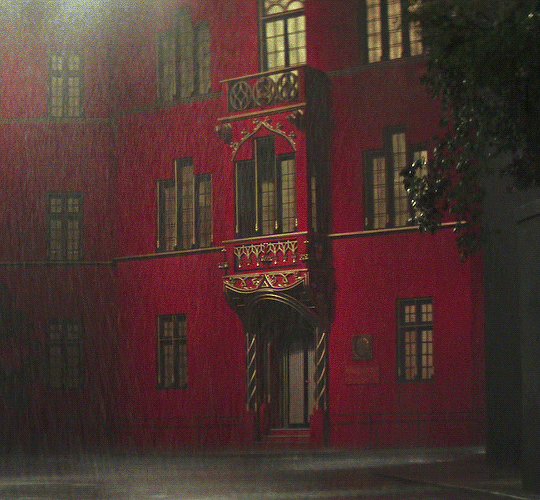
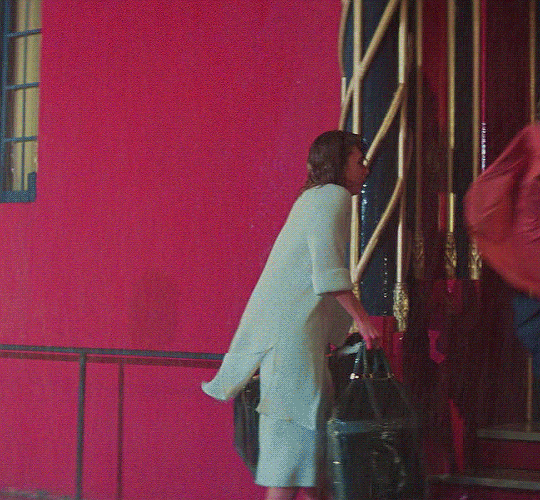
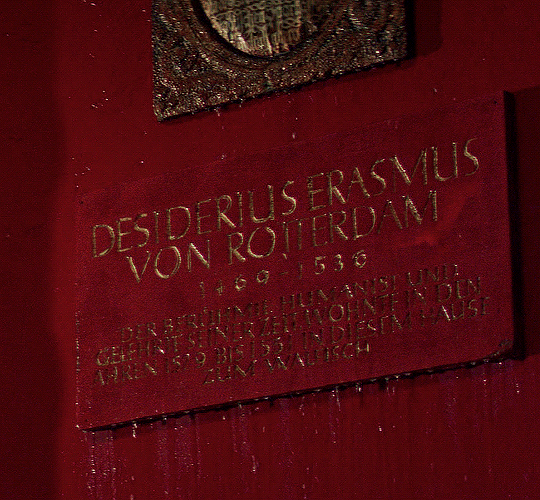

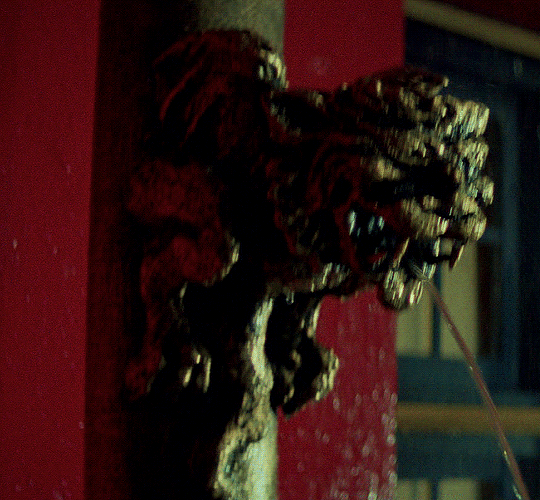

SUSPIRIA (1977) | dir. Dario Argento
2K notes
·
View notes
Text
TENEBRAE (1982) – Episode 234 – Decades Of Horror 1980s
“<Evil chuckle> When I realized Christiano Berti was the killer… and it didn’t take me long to realize that. <Evil chuckle> The rest, Mr Germani, was like writing a book. A Book!” Book ’em, Dan-o! Wait. Wrong media. Join your faithful Grue Crew – Chad Hunt, Bill Mulligan, Crystal Cleveland, and Jeff Mohr – as they take a cue from the 70s Grue Crew and take in some Giallo, Dario Argento-style with Tenebrae (1982).
Decades of Horror 1980s Episode 234 – Tenebrae (1982)
Join the Crew on the Gruesome Magazine YouTube channel! Subscribe today! And click the alert to get notified of new content! https://youtube.com/gruesomemagazine
American author Peter Neal, who – while in Rome promoting his latest murder-mystery novel – becomes embroiled in the search for a serial killer who may have been inspired to kill by his novel.
Writer/Director: Dario Argento
Produced by: Claudio Argento (producer), Salvatore Argento (executive producer), Allan Scott (producer: English version)
Music by: Massimo Morante, Fabio Pignatelli, Claudio Simonetti (as Simonetti-Morante-Pigatelli)
Cinematography by: Luciano Tovolin (director of photography)
Film Editing by: Franco Fraticelli
First Assistant Director: Lamberto Bava
Second Assistant Director: Michele Soavi
Special Effects by: Giovanni Corridori (special effects)
Production Services – New York: William Lustig (uncredited)
Selected Cast:
Anthony Franciosa as Peter Neal
John Saxon as Bullmer
Daria Nicolodi as Anne
Giuliano Gemma as Detective Germani
Christian Borromeo as Gianni
Mirella D’Angelo as Tilde
Veronica Lario as Jane McKerrow
Ania Pieroni as Elsa Manni
Eva Robins as Girl on Beach
Carola Stagnaro as Detective Altieri
John Steiner as Christiano Berti
Lara Wendel as Maria Alboretto
Isabella Amadeo as Bullmer’s secretary
Mirella Banti as Marion
Lamberto Bava as Elevator Repairman #1 (uncredited)
It’s time for another 1980s feature from director Dario Argento with a return to the Giallo sub-genre. The film is Tenebrae – or Tenebre (original title) or Ténèbres (French) – and features Anthony Franciosa, John Saxon, and Daria Nicolodi. Argento was inspired by a series of incidents that saw an obsessed fan telephone the director to criticize him for the damaging psychological effects of his previous work. The telephone calls culminated in death threats towards Argento, who channeled the experience into the writing of Tenebrae with a double helix of a plot.
At the time of this writing, Tenebrae is available to stream from Wicked Horror TV, Shudder, Kanopy, and Plex. It is also available on Blu-Ray and 4K Ultra HD from Synapse Films.
This is the Decades of Horror Grue Crews’ xth encounter with Argento. Here are their other Argento episodes if you care to check them out.
THE BIRD WITH THE CRYSTAL PLUMAGE (1970) – Episode 190 – Decades of Horror 1970s
THE CAT O’ NINE TAILS (1971) – Episode 149 – Decades of Horror 1970s
DEEP RED (1975) — Episode 77 — Decades of Horror 1970s
SUSPIRIA (1977) — Episode 58 — Decades of Horror 1970s
PHENOMENA (1985) – Episode 168 – Decades of Horror 1980s
DARK GLASSES (2022, SHUDDER) – Gruesome Magazine #369
Every two weeks, Gruesome Magazine’s Decades of Horror 1980s podcast will cover another horror film from the 1980s. The next episode’s film, chosen by Crystal, will be George Romero’s Monkey Shines (1988). Oh yeah. We love monkeys with sharp utensils!
Please let them know how they’re doing! They want to hear from you – the coolest, grooviest fans – so leave them a message or comment on the Gruesome Magazine Youtube channel, on the Gruesome Magazine website, or email the Decades of Horror 1980s podcast hosts at [email protected].
Check out this episode!
0 notes
Photo
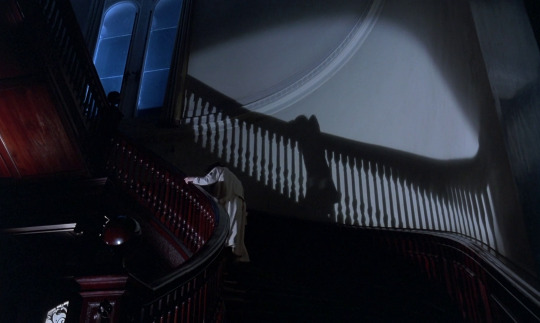


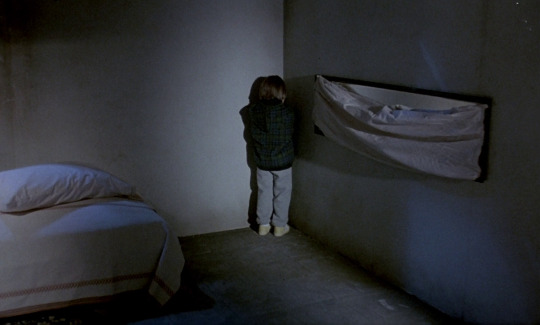

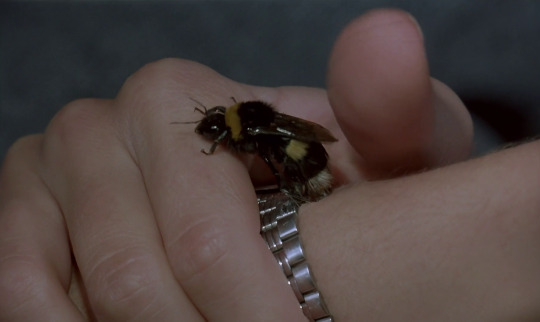


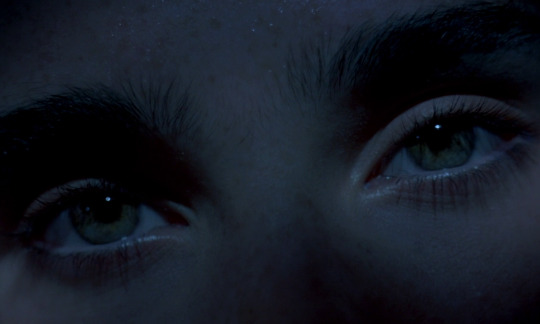

Phenomena (Dario Argento, 1985).
#phenomenal#phenomena (1985)#dario argento#jennifer connelly#romano albani#franco fraticelli#maurizio garrone#nello giorgetti#luciano spadoni#umberto turco#giorgio armani#marina malavasi#patrizia massaia
575 notes
·
View notes
Photo
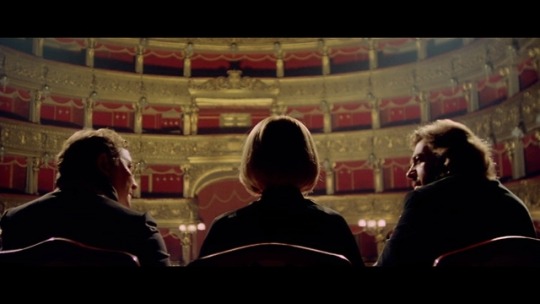
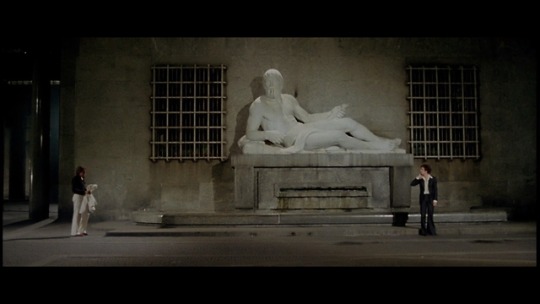
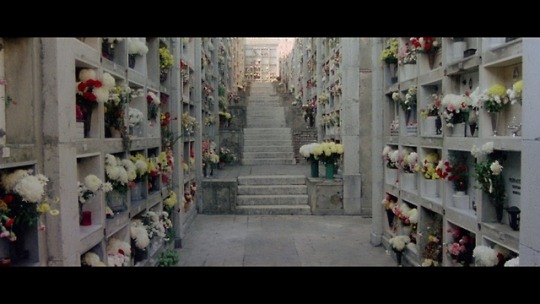
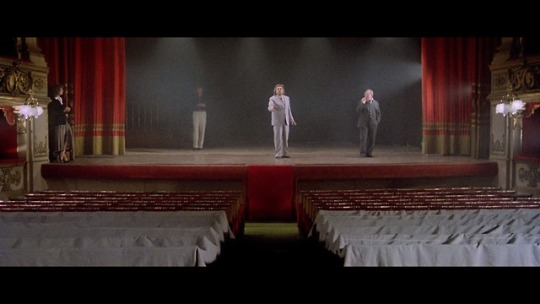

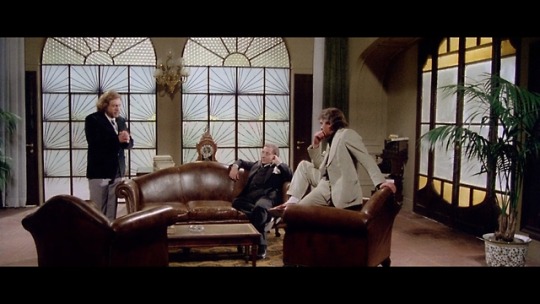
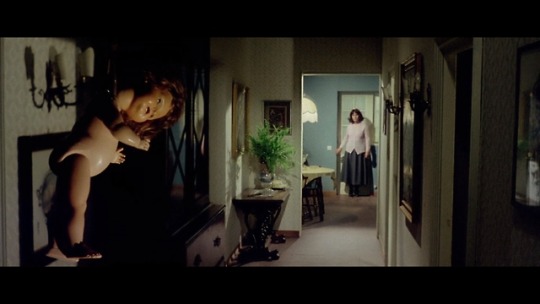
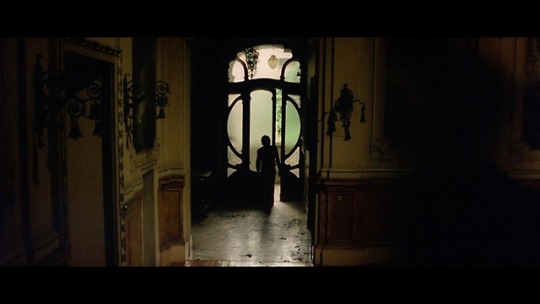
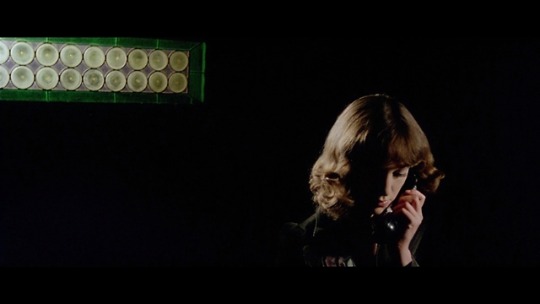

Deep Red (1975)
Country: Italy
Directed by: Dario Argento
Written by: Argento & Bernardino Zapponi
Cinematography by: Luigi Kuveiller
Edited by: Franco Fraticelli
Produced by: Salvatore Argento
Music by: Goblin & Giorgio Gaslini
Production Design by: Giuseppe Bassan
#Deep Red#Profondo rosso#Movie#Italy#Dario Argento#Bernardino Zapponi#Luigi Kuveiller#Franco Fraticelli#Salvatore Argento#Goblin#Giorgio Gaslini#Giuseppe Bassan#Howard Mahler Films#Anchor Bay Entertainment#Blue Underground#Catcom Home Entertainment#EastWest Entertainment#Frolic Pictures#Reel Media International#1970s#Horror#Mystery#Thriller#Giallo
15 notes
·
View notes
Text
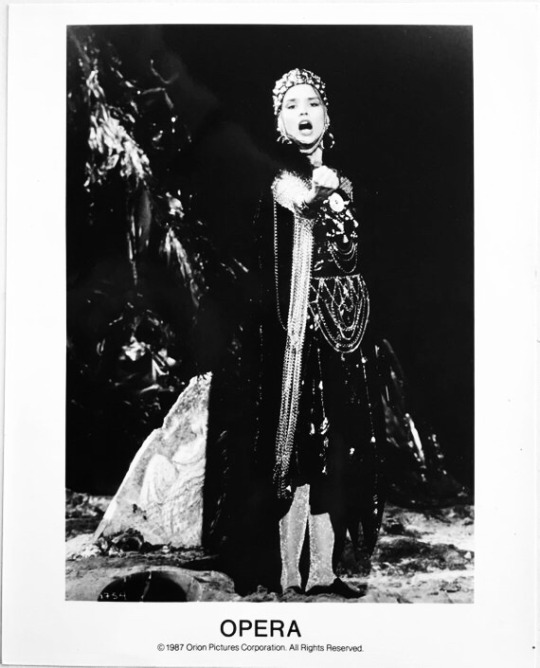
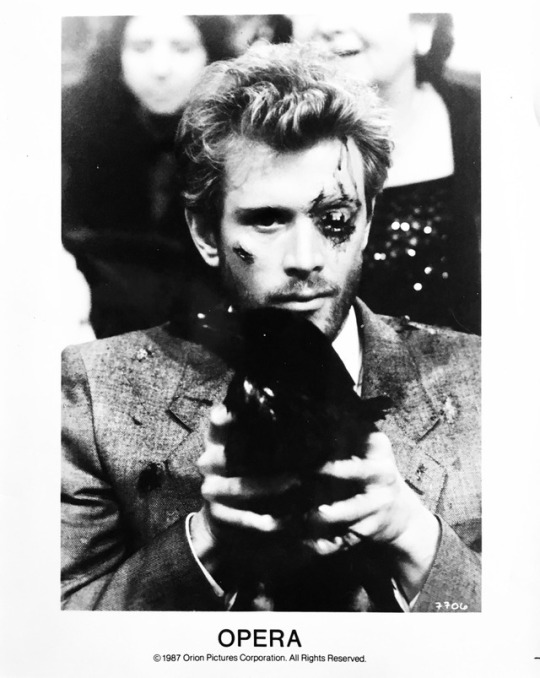
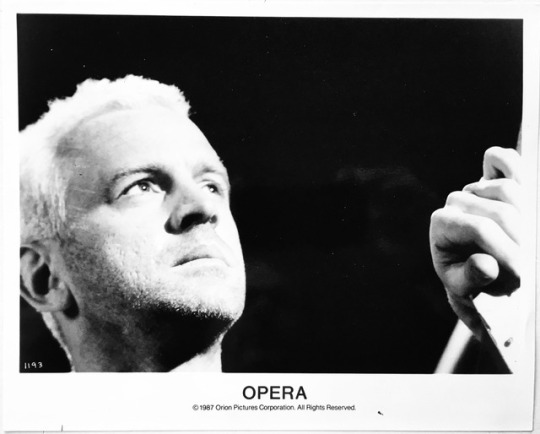
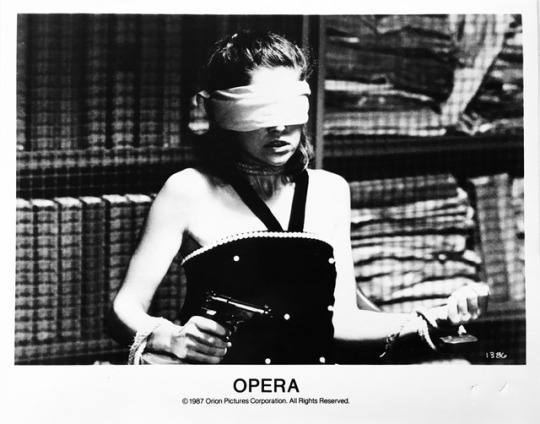

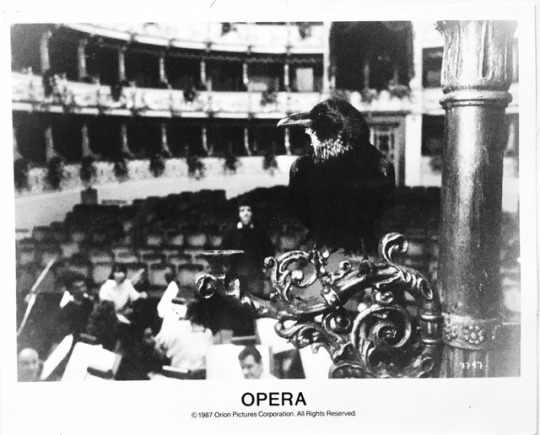

1987
Rare Postcard (Official) of the Dario Argento’s Cult ...
Opera
Riprese
Le riprese cominciarono il 25 maggio 1987 e terminarono il 14 ottobre dello stesso anno.
La pellicola fu girata fra Lugano, in Svizzera, Roma e all'interno del Teatro Regio di Parma, ambientazione delle scene d'opera del film. La protagonista del film doveva essere, prima ancora che le riprese iniziassero, Giuliana De Sio poi rimossa per la scelta di Argento e lo sceneggiatore Ferrini di dare un'età più "verde" al personaggio principale e venne sostituita dalla meno nota Cristina Marsillach, che si rivelò però altrettanto valida.
Michele Soavi aiuta Argento nella regia del film come regista in seconda unità.
Durante le riprese avvennero sul set fatti strani, che convinsero Argento del fatto che il suo film fosse stato preso di mira dalla cosiddetta maledizione del Macbeth (in realtà esistente solo nel teatro di prosa per il dramma di Shakespeare, detto scaramanticamente dramma scozzese, mentre l'opera di Giuseppe Verdi non gode di nessuna fama infausta nell'ambiente operistico).
Accoglienza
La pellicola ebbe molto successo tra il pubblico, arrivando al 12º posto della classifica dei film dal maggior incasso in Italia nella stagione cinematografica 1987-88 (in totale incassò 7.207.592.000 £).
Riconoscimenti
1990 - Festival internazionale del cinema di Porto
Nomination Miglior film a Dario Argento
1988 - Ciak d'oro
Miglior manifesto a Renato Casaro
Nomination Miglior scenografia a Davide Bassan
Nomination Migliori costumi a Lia Francesca Morandini
Nomination Miglior montaggio a Franco Fraticelli
Dario Argento - authorized page
Cast
Cristina Marsillach: Betty
Ian Charleson: Marco
Urbano Barberini: Santini
Antonino Iuorio: Baldini
Daria Nicolodi: Mira
Coralina Cataldi Tassoni: Giulia
Antonella Vitale: Marion
William McNamara: Stefano
Barbara Cupisti: sig.ra Albertini
Carola Stagnaro: madre di Alma
Francesca Cassola: Alma
Maurizio Garrone: Maurizio
Cristina Giachino: Maria
György Gyõriványi: Miro
Peter Pitsch: assistente di Mara Cekova
Bjorn Hammer: poliziotto
Sebastiano Somma: poliziotto
Dario Argento: narratore
Michele Soavi: Daniele Soave
#dario argento#darioargento#darioargentoopera#darioargentofilmografia#darioargentofilm#darioargentomovies#giallo#giallofever#gialli#giallo fever#italian giallo#italian cult#cult#cinema cult#italian sexy comedy#international cult
7 notes
·
View notes
Photo

This generation of females, who feel the impulse to learn how to kick males, I believe is dangerous. It’s more than matriarchy! This is the prelude to the Apocalypse.
Rita the Mosquito (Rita la zanzara), Lina Wertmüller (1966)
#Lina Wertmüller#Sergio Bonotti#Rita Pavone#Giancarlo Giannini#Peppino De Filippo#Nino Taranto#Bice Valori#Giusi Raspani Dandolo#Laura Efrikian#Mirella Pamphili#Vittorio Congia#Ugo Fangareggi#Paolo Panelli#Dario Di Palma#Bruno Canfora#Franco Fraticelli#1966#woman director
10 notes
·
View notes
Photo


Damero Illusio 150 x 150 x 5 cm. Tela, hilo, fieltro, papel, témpera. 2019
Foto: Gustavo Sosa Pinilla. Gentileza: Colección Amalita.
PREMIO FUNDACIÓN FORTABAT
Seleccionados Artistas mayores de 35 años: Sergio Bazán, Juan Becú, Gisele Bliman, Florencia Bohtlingk, Sofia Bohtlingk, Dolores Casares, Juan Alejandro Castillo, L&D Chiachio & Giannone, Cynthia Cohen, Andrés Gastón Compagnucci, Roberto Cortés, Pablo de Montaldo, Juan Martin Di Girolamo, Diana Dowek, Manuela Durañona y Vedia, Franco Fasoli, María Ferrari Hardoy, Diego Figueroa, Onofre Roque Fraticelli, Valeria Gopar, Alicia Herrero, Mario Inchauspe, Ricardo Laham, Catalina León, Valentina Liernur, Valeria Maculan, Gustavo Marrone, Paula Otegui, Aimé Pastorino, Diego Perrotta, Julián Prebisch, Deborah Pruden, Victor Quiroga, Lucas Rocino, Belén Romero Gunset, Luciana Rondolini, Cristina Schiavi, Cristian Segura, Pablo Andrés Sinaí, Richard Sturgeon, Inés Szigety, Leila Tschopp, Paola Vega, Gabriela Winicki, Horacio Zabala
Jóvenes, artistas de 18 a 34 años: Manuel Aja Espil, Andrés Alvez, Paz Bardi, Sofía Berakha, Cecilia Catalin, Alfredo Dufour, Nahuel Ferreira, Esteban Giannone Martinez, Camila Lamarca, Diffusion Line, Lucrecia Lionti, Gimena Macri, Valeria Maggi, Nadia Martynovich, Federico Manuel Mesaroli, Tiziana Pierri, Andrés Piña, Nicolas Ponton, Victoria Renzo, Nicolás Romero Escalada, Ana Clara Soler, Ariel Venegas, Mayra Vom Brocke Jurado: Mari Carmen Ramirez, Marcelo Pacheco, Pablo León de la Barra, Amalia Amoedo y Rodrigo Alonso
0 notes
Text

Giancarlo Giannini and Mariangela Melato in Love & Anarchy (Lina Wertmüller, 1973)
Cast: Giancarlo Giannini, Mariangela Melato, Eros Pagni, Pina Cei, Elena Fiore, Giuliana Calandra, Isa Bellini, Lia Polito. Screenplay: Lina Wertmüller. Cinematography: Giuseppe Rotunno. Art direction: Gianni Giovagnoni. Film editing: Franco Fraticelli. Music: Nino Rota, Carlo Savina.
Lina Wertmüller was the first woman ever nominated for the best director Oscar, for Seven Beauties (1975). I always thought that her films were wound a little too tight, and Love & Anarchy rather confirms my opinion. The performances are ratcheted up at times to near-hysteria, and things that could be said are shouted. But even when Wertmüller's cast is milking it for all it's worth, it's clear that she has a point of view and the means to express it, especially with the two actors on whom she frequently called during her directorial heyday half a century ago. As Tunin, the "bumpkin" who has taken on the task of assassinating Mussolini, Giancarlo Giannini plays a complete dramatic arc, from the wide-eyed, almost comatose naïf who finds himself lodged in a Roman brothel and then goes through stages of passion, fear, disgust, commitment, and a final martyrdom. Mariangela Melato as the sex worker Salomè doesn't have such a grand arc to traverse, but somehow she manages to let traces of humanity show through the flamboyant façade she has adopted. Eros Pagni as the odious Fascist Spatoletti and Lia Polito as Tripolina, the winsome prostitute who wins Tunin's heart, are also good, though their roles verge on caricature. The handsome cinematography is by Giuseppe Rotunno, who at one point expresses the divisions in Tunin's character by a tricky, brilliant shot that shows Giannini and his reflections in two different mirrors.
9 notes
·
View notes
Link
di Stefania Mezzina
SAN BENEDETTO – Lunedì 19 agosto, dalle ore 21.30, tornerà Pianeta Oltremarte, ai Bagni Oltremare di Maria Rita e Gigi Capriotti. L’appuntamento con i viaggi dell’arte e delle eccellenze picene questa volta sarà centrato sui Germogli d’arte.
A partire dalle ore 21.30 andranno in scena le performance di giovani talenti e lo spettacolo di Pippi Trasformista. Sarà ancora una volta Luca Sestili, il magnifico condottiero, del nuovo appuntamento della 11^ edizione di Pianeta Oltremarte, con la sua capacità di presentare quanto si alterna alla manifestazione che gode del patrocinio della Provincia di Ascoli Piceno, della Camera di Commercio delle Marche, del comune di San Benedetto del Tronto e della Confcommercio provinciale.
Il tutto sarà condito dagli eccezionali momenti musicali del maestro Sergio Capoferri e dalla potente voce del tenore Antonio Camela, che ad ogni appuntamento catturano e strappano grandi applausi dal pubblico.
L’evento arriva dopo la vetrina offerta dal Pianeta a Monsampolo del Tronto e Castignano. Protagonisti sono stati gli gnocchi di Monsampolo, realizzati al momento e offerti al pubblico dalle donne del Circolo Culturale Monsampolese, rappresentato nell’occasione da Emidio Ciabattoni: un laboratorio che ha offerto ai turisti la possibilità di realizzare a loro volta gli gnocchi, tra gli applausi del pubblico.
Monsampolo ha offerto anche la musica folkloristica del gruppo “Miet e lea”, e la presentazione del museo delle mummie, con i tour notturno “Miti e Misteri” del martedì, illustrati dal sindaco Massimo Narcisi, così come la degustazione dei vini de Il Crinale, rappresentata dal monsampolese Armando Neroni e per questo inserita tra le proposte del territorio.
Per Castignano, gli applausi sono andati alle piccole e competenti guide di Templaria, con pillole dell’importante manifestazione, tramite l’esibizione di alcune figure tradizionali, come i carcerati e i fraticelli: piccole guide alle quali spetta il compito di accogliere i visitatori e di raccontare le notizie storiche del territorio e di Templaria, in scena sino al 21 agosto. All’interno di Templaria si contano relatori, tra cui, quest’anno, il professor Franco Mezzanotte, per gli addetti ai lavori un nome importante.
Si è parlato e il pubblico ha avuto l’opportunità di gustare i semi dell’Anice verde di Castignano, Presidio Slow Food, a cura dello staff e del presidente dell’omonima associazione, Sergio Corradetti, e infine accenni al Museo d’arte sacra. Territorio rappresentato dal sindaco Fabio Polini. Padrone di casa istituzionale, il sindaco Pasqualino Punti, che non si è sottratto all’invito di una performance canora, oltre ai saluti di rito, e ai rallegramenti espressi verso l’importante manifestazione di Pianeta Oltremarte, anche da parte di Fausto Calabresi, presidente provinciale della Confcommercio.
Ulteriore appuntamento sarà giovedì 22 agosto: dopo la pausa dettata dalla concomitanza del ferragosto, il giovedì dell’arte vedrà in scena Venarotta, Palmiano e Castorano con le sue caratteristiche e offerte gastronomiche.
0 notes
Text
Mr. Pauer y Mirella Cesa traen ‘Respira’ a Nueva York

News / Noticias
Mr. Pauer y Mirella Cesa traen ‘Respira’ a Nueva York
Jul 27, 2018 Por Sandra Escallón

Photo by Cesar Calderón/BMI El productor y artista venezolano Mr. Pauer fue parte del show Verano Alternativo dentro de la conferencia Latin Alternative Music (LAMC) en Nueva York. El nominado a los Latin Grammy estuvo acompañado de la cantante ecuatoriana Mirella Cesa con quien presentó la canción Respira. Mr. Pauer es considerado como el creador del sonido Electrópico, y ha colaborado con grandes de la industria musical. Mr. Pauer habló con nosotros sobre su colaboración con Mirella y su experiencia en Nueva York. S: ¿Cómo nació la colaboración con Mirella Cesa para hacer la canción Respira? Mr. Pauer: Tuve la dicha de conocer a Mirella ya hace un par de años y coincidió que ella estuvo en Miami, donde tengo mi estudio, y logramos concretar una reunión para conocernos y explorar musicalmente lo que podíamos hacer. Ella trae un sonido que se llama ANDIPOP, que son sonidos andinos donde usa instrumentos como el charango, sonidos más de la montaña. Por otro lado, Mr. Pauer hace un sonido que se llama Electrópico, que es la frecuencia sonora que sucede entre el trópico de cáncer y el de capricornio alrededor del mundo, en su basta colección percusiva y exploración de los sonidos africanos y su influencia en nuestros países. Fue interesante combinar ese sonido de la montaña con el sonido del caribe, y estuvimos en el estudio creando esta canción que aparte tiene un mensaje que habla sobre pausar un poco, observar a nuestro alrededor y apreciar algo tan sencillo como la respiración. De esta manera se da nuestra colaboración, de la cual ya tenemos el video musical. S: El video tiene ya más de 100 mil vistas y la canción ha sido muy bien recibida por sus seguidores. ¿Qué significa ver que nuevas generaciones admiran y siguen la música de nuestras raíces? Mr. Pauer: Me da muchísima alegría porque tenemos en el momento todo el boom del género urbano, que es el nuevo pop que está nominando a nivel mundial, y eso también nos ha dado beneficios de que la gente sea más exploratoria y conozca nuevos sonidos latinoamericanos, los cuales están también formados desde hace muchos años. Y también hay artistas como Mr. Pauer y Mirella que están haciendo toda esta evolución sonora de la herencia musical de nuestros países y proponen un sonido nuevo y fresco. Me da mucha alegría poder expresarme de esta manera y tener un público que también entiende lo que está pasando musicalmente. S: Bueno, y tuvieron la oportunidad de tocar Respira junto a Mirella en Nueva York durante el Latin Alternative Music Conference. ¿Cómo fue esa experiencia? Mr.Pauer: Estabamos ya con la expectativa de poder tocar en Nueva York en el evento de BMI. Esta canción fue hecha en un estudio y es interesante cómo se ve todo este proceso de creación desde la primera conversación hasta hacer un showcase en Nueva York. Así vamos respirando el camino que nos da la canción y hacia dónde nos va llevando. S: ¿Qué nuevos proyectos vienen en camino? Mr. Pauer: Siempre estoy en mis facetas como productor, como lo hice con Mirella, de live performer, donde llevo mi música original en vivo con mi banda, y como dj. Con esas 3 me mantengo entretenido y con la agenda llena. Tenemos un track nuevo que nace de esta colaboración con Mirella que saldrá probablemente antes de fin de año. Este se llama Alboroto y también lo tocamos en el showcase de BMI donde el público lo recibió muy bien. Admiro también el trabajo de Mirella, al ser artista independiente, como yo, ya que llevo muchos años en este patrón. S: ¿Qué le dirías a esos artistas que están empezando como músicos independientes? Mr.Pauer: Para mi es clave estar muy claro de que realmente la música es lo que te mueve, yo tube la dicha de encontrarme con ese sentimiento a una temprana edad. Una vez que ya lo descubres sigue el paso más grande, es cómo lo proteges, cómo eres responsable de ese don de hacer música, y cómo eres dedicado. La dedicación, creer en ti mismo, y creer en lo que estás aportando al mundo son la clave para seguir adelante. Tengo la fortuna de vivir de la música, y esto es un compromiso y un modo de vida. Al mismo tiempo es bello cuando estás en un escenario y compartes con un público que siente lo mismo cuando se toca una canción. > (adsbygoogle = window.adsbygoogle || ).push({}); Search for: https://www.youtube.com/watch?v=K68zhw-fxuM&t=116s CategoriesBlog Brazil Events Fashion Featured Flashbacks News/Noticias On the Scene Sports Press Alert Television Uncategorized

Maréh: “Mis canciones nacen de las ganas de comunicar, de expresar y de sentir”
by admin | Jul 25, 2018 | Featured, News/Noticias | 0 CommentsEl cantante-compositor caleño Maréh se ha ido convirtiendo en la nueva voz de la escena musical colombiana para el mundo. Su música combina diferentes sonidos, desde el jazz hasta el reggae, que lo han llevado a compartir escenarios con músicos como Cultura Profética y Aterciopelados. El también multinstrumentista hizo parte del Latin Alternative Music Conference (LAMC), una de las conferencias más importantes en Nueva York, para mostrar su nuevo álbum Amuleto en el evento Verano Alternativo, organizado por BMI. Hablamos con Maréh sobre su música y experiencia en este exclusivo showcase.
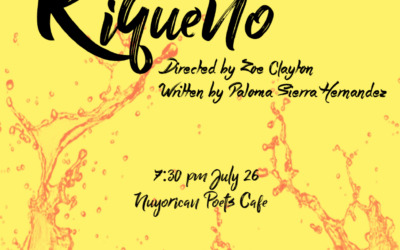
La obra ‘Riqueño’ habla de la identidad puertorriqueña
by admin | Jul 22, 2018 | Featured, News/Noticias | 0 CommentsYo escribí el texto, la música fue realizada por el maestro Emanuel Franco Fraticelli, quien es un compositor puertorriqueño y ahora estudia en el conservatorio de Puerto Rico. En la dirección está Zoe Clayton, la diseñadora de vestuario y escenografía es Domitille Angoulvant, diseñadora de media es Sophie Chen….

MANHATTAN STEAM PIPE EXPLOSION
by admin | Jul 20, 2018 | Featured, News/Noticias | 0 CommentsOn Thursday July 19th, at 6:39 am, there was a steam line rupture close to the iconic Flatiron in Manhattan. There was a lot of smoke but nobody got injured. « Older Entries ELE OnTheScene MEET ELE OnTheScene About Us Staff Press Alerts EPK Media Kit NEED HELP? Privacy Policy Cookies Policy Contact Us FOLLOW US facebook Twitter Google+ Pinterest Instagram tumblr Youtube skype RSS Noticias / News Read the full article
#sonido#BMI#Electrópico#fuepartedelshowVeranoAlternativodentrodelaconferenciaLatinAlternativeMusicLAMC#LatinGrammy#MirellaCesa#Mr.Pauer#NuevaYork#Respira
0 notes
Text

Deep Red (Dario Argento, 1975)
Cast: David Hemmings, Daria Nicolodi, Gabriele Lavia, Macha Méril, Eros Pagni, Giuliana Calandri, Piero Mazzinghi, Glauco Mauri, Clara Calamai. Screenplay: Dario Argenti, Bernardino Zapponi. Cinematography: Luigi Kuveiller. Production design: Giuseppe Bassan. Film editing: Franco Fraticelli. Music: Giorgio Gaslini, Goblin.
Dario Argenti likes his protagonists to keep sticking their noses in places where they shouldn't. In The Bird With the Crystal Plumage, for example, it's an American writer who witnesses something that he should have left to the Italian police to investigate, but he persists in trying to solve the crime, putting himself and his girlfriend in peril. And in Deep Red it's a British jazz pianist, Marcus Daly (David Hemmings), who witnesses something that he should have left to the Italian police to investigate, but he persists in trying to solve the crime, putting himself and his girlfriend, journalist Gianna Brezzi (Daria Nicolodi), in peril. Well, if a formula works, use it. And it does work, though largely because Argenti has such delight in flinging the most improbable situations and the most colorful (not to say bloody) images at the viewer. He also likes to load his films with a variety of eccentric characters, some of whom are red herrings, but most of which are just there to keep the protagonist on his toes. (There's a touch of homophobia in Argenti's treatment of some of them, like the antiques dealer in The Bird who keeps hitting on the writer, and the androgynous lover of Marcus's friend Carlo (Gabriele Lavia) who elicits a puzzled response from Marcus.) It's best not to try to solve the mysteries along with Argento's amateur detectives, mainly because nothing in his elaborate plots makes sense, like the mechanical doll that spooks one of the victims, or even the identity of the killer. Hemmings, who was usually cast as somewhat creepy, is instead a likable and intrepid protagonist, and Nicolodi is more the entertainingly spunky sidekick than the romantic interest.
1 note
·
View note
Text
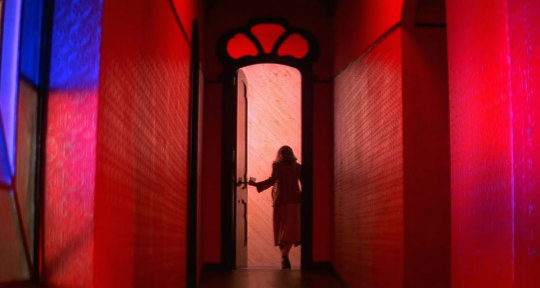
Jessica Harper in Suspiria (Dario Argento, 1977)
Cast: Jessica Harper, Stefania Cassini, Flavio Bucci, Miguel Bosé, Barbara Magnolfi, Susanna Javicoli, Eva Axén, Rudolf Schündler, Udo Kier, Alida Valli, Joan Bennett. Screenplay: Dario Argento, Daria Nicolodi. Cinematography: Luciano Tovoli. Production design: Giuseppe Bassan. Film editing: Franco Fraticelli. Music: Dario Argento, Goblin (Agostino Marangolo, Massimo Morante, Fabio Pignatelli, Claudio Simonetti).
I've seen movies in which the sets were more interesting than what's going on in them, but I don't think anyone would say that about Dario Argento's Suspiria. At the very least, in the competition of setting and action for the viewer's attention, it's a draw. When Suzy Bannion (Jessica Harper) tells a cab driver to take her to Escherstrasse, I should have been alerted to the visual phantasmagoria that is to come. It's clear that Argento means us to pick up on the allusion to the Dutch artist M.C. Escher, known for his plays on perspective and visual puzzles; Argento has the surly cabbie force Suzy to repeat the street name twice before saying it himself. But Escher's work was in black and white; Argento's, and that of his production designer, Giuseppe Bassan, and his cinematographer, Luciano Tovoli, is in color -- the most lurid Technicolor seen in a movie since the heyday of the MGM musical. Not that Suspiria has much in common with those musicals: The dominant color in Suspiria is red, and a lot of that red is blood, often artfully splattered. (One large blood splat looks like a Rorschach test.) I can't say that I was shocked by anything in the movie, although the many murders in it verge on overkill. It's too gaudy and noisy -- the background music by Goblin is the aural equivalent of the decor -- to build much tension. I could wish the dubbing of the dialogue didn't have the depthless quality, the lack of ambiance, of speech recorded in a studio -- even the English-speaking actors were post-synched in the manner of many Italian films of the era. But then the dialogue doesn't matter much: It's nonsense about witches, and the plot is only a device to hang horrors on. Still, Suspiria is a one-of-a-kind movie -- maybe we should be grateful for that -- and a landmark in its genre.
1 note
·
View note
Text
THE BIRD WITH THE CRYSTAL PLUMAGE (1970) – Episode 190 – Decades Of Horror 1970s
“Right! Bring in the perverts” They always make for a good police lineup. Join your faithful Grue Crew – Doc Rotten, Chad Hunt, Bill Mulligan, and Jeff Mohr – as they get their Giallo on with Dario Argento’s first shot at directing, The Bird with the Crystal Plumage (1970).
Decades of Horror 1970s Episode 190 – The Bird with the Crystal Plumage (1970)
Join the Crew on the Gruesome Magazine YouTube channel! Subscribe today! And click the alert to get notified of new content! https://youtube.com/gruesomemagazine
An American expatriate in Rome attempts to unmask a serial killer he witnessed in the act of attempted murder – and is now hunting him and his girlfriend.
Director: Dario Argento
Writers: Dario Argento; Fredric Brown (novel, The Screaming Mimi, 1949) (uncredited)
Produced by: Salvatore Argento (producer); Artur Brauner (executive producer: CCC Filmkunst) (uncredited)
Music by: Ennio Morricone
Cinematography by: Vittorio Storaro (director of photography)
Film Editing by: Franco Fraticelli
Selected Cast:
Tony Musante as Sam Dalmas
Suzy Kendall as Julia
Enrico Maria Salerno as Inspector Morosini
Eva Renzi as Monica Ranieri
Umberto Raho as Alberto Ranieri
Renato Romano as Professor Carlo Dover (credited as Raf Valenti)
Giuseppe Castellano as Monti
Mario Adorf as Berto Consalvi
Pino Patti as Faiena
Gildo Di Marco as Garullo
Rosita Torosh as 4th Victim (as Rosa Toros)
Omar Bonaro as Police Detective
Fulvio Mingozzi as Police Detective
Werner Peters as Antique Dealer
Karen Valenti as Tina, 5th Victim
Carla Mancini as Girl watching TV
Bruno Erba as Police Detective
Reggie Nalder as Needles, Yellow Jacket Assassin (uncredited)
With his first feature directorial effort, modern horror master Dario Argento immediately showed off his skill, precision, and artistry. Often looked upon as the rise in popularity for Giallo films, The Bird with the Crystal Plumage (1970) would set the bar for all the pre-slasher killer mystery thrillers for over a decade even giving the father of the subgenre, Mario Bava (The Girl Who Too Much, 1963; Blood and Black Lace, 1964), a run for his money. While Argento adapts many influences into his first of a series of films known as the “Animal Trilogy,” along with The Cat o’ Nine Tails (1971) and Four Flies on Grey Velvet (1971), his film would in turn influence many films for decades to come. Some of those films would be directed by his peers such as Bava and Lucio Fulci. Others who would pay homage would be the likes of Carpenter and de Palma. Jeff, Doc, Bill, and Chad gather to discuss the film, its creators, and its mark on the genre.
At the time of this writing, The Bird with the Crystal Plumage is available to stream on a multitude of streaming and PPV services including Kanopy, Tubi, Prime Video, and Screambox to name a few. The film is also available as a Blu-ray and as a 4K Ultra HD Blu-ray from Arrow Video.
Gruesome Magazine’s Decades of Horror 1970s is part of the Decades of Horror two-week rotation with The Classic Era and the 1980s. In two weeks, the next episode, chosen by Chad, will be The Dunwich Horror (1970). Yog-Sothoth, anyone?
We want to hear from you – the coolest, grooviest fans: comment on the site or email the Decades of Horror 1970s podcast hosts at [email protected].
Check out this episode!
0 notes